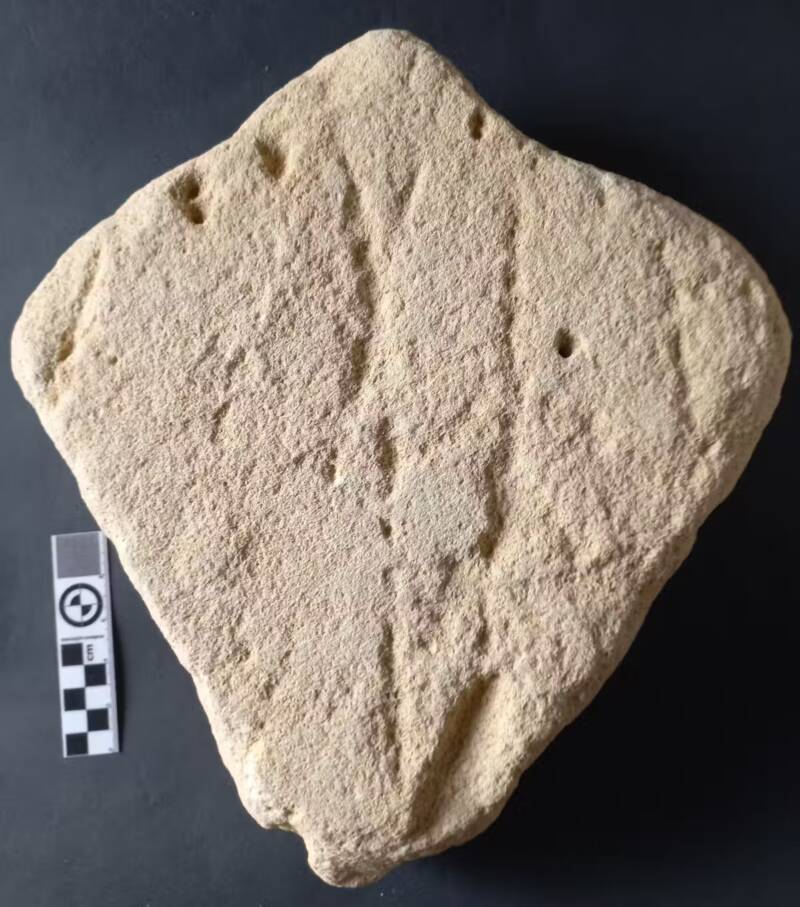
A paper published on January 29 in Rock Art Research says that a prehistoric rock, which to the untrained eye looks rather unassuming, may in fact be a 130,000 year-old “sand sculpture” animal carving in the shape of a blue stingray. Just minus the tail…
A Purported Pleistocene Sandsculpture from South Africa concluded that “the possibility that the combination of multiple symmetrical features is due to chance alone is, in our view, remote,” and that the “close correspondence in shape between the sand sculpture and the blue stingray suggests that it may have been traced from a fresh specimen.”
One diagram from the paper demonstrates the similarity between the symmetrical markings on the rock and those on a blue stingray’s body. The team also suggested that lack of tail on the stingray sculpture may have been due to its creator “symbolically wounding it and amputating its lethal end,” perhaps as part of an ancient ceremony.
Co-authors Charles Helm, of Nelson Mandela University, and Alan Whitfield, Emeritus Chief Scientist as the South African Institute for Aquatic Biodiversity, said they have drawn up their conclusions “based on our understanding of many tens of thousands of such rocks” and that their use of the words “purported” and “believe” is because they “cannot prove our interpretation” and that “ancient paleoart is rare in the archaeological record, and may be harder to recognize than more recent art,” adding “we really don’t know how much we don’t know.”
The upper and lower surface of the purported sand sculpture. Photo: Helm et al, https://rockartresearch.com/index.php/rock/article/view/272/268.
The aeolianite rock was found on the South African coast, around 205 miles from Cape Town. The artwork is posited to have been made as an ammoglyph: an image first traced into sand before being slowly cemented into stone over the course of thousands of years. This typically happens in areas with sand dunes and high wind levels. The blue stingray, which the researchers believe may have been the inspiration of the sculpture, is native to the waters around South Africa. Fossil records suggest that stingrays have been living on earth for around 150,000,000 years. If this rock truly is the earliest-known artistic representation of an animal, it beats the current record-holder—a 45,000 year-old cave painting of a pig in Indonesia—by a long way.
The researchers began their work in the Still Bay area in 2008, and discovered fossilized tracks of Pleistocene (the period between 2.58 million and 11,700 years ago) animals and ancient hominin footprints. The possible animal carving was first spotted in 2018, and the team used optically stimulated luminescence—a method of measuring ionizing radiation—to date the the rock to around 130,000 years ago.